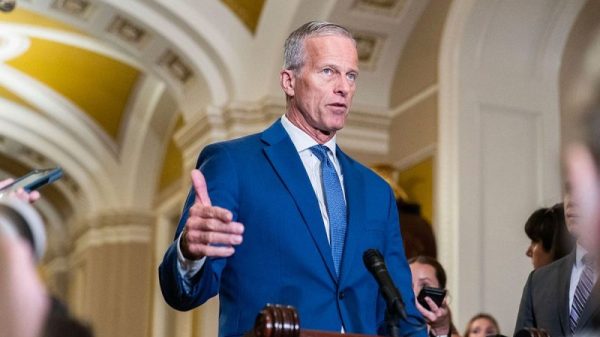
By Aditya Soni, Arsheeya Bajwa, Krystal Hu
(Reuters) -OpenAI on Friday outlined plans to revamp its structure, saying it would create a public benefit corporation to make it easier to “raise more capital than we’d imagined,” and remove the restrictions imposed on the startup by its current nonprofit parent.
The acknowledgement and detailed rationale behind its high-profile restructuring confirmed a Reuters report in September, which sparked debate among corporate watchdogs and tech moguls including Elon Musk. At issue were the implications such a move might have on whether OpenAI would allocate its assets to the nonprofit arm fairly, and how the company would strike a balance between making a profit and generating social and public good as it develops AI.
Under the proposed plan, the ChatGPT maker’s existing for-profit arm would become a Delaware-based public benefit corporation (PBC) – a structure designed to consider the interests of society in addition to shareholder value.
OpenAI has been looking to make changes to attract further investment, as the expensive pursuit of artificial general intelligence, or AI that surpasses human intelligence, heats up.
Its latest $6.6 billion funding round at a valuation of $157 billion was contingent on whether the ChatGPT-maker could upend its corporate structure and remove a profit cap for investors within two years, Reuters reported in October.
The nonprofit, meanwhile, will have a “significant interest” in the PBC in the form of shares as determined by independent financial advisers, OpenAI said in a blog post, adding that it would be one of the “best resourced nonprofits in history.”
OpenAI started in 2015 as a research-focused nonprofit but created a for-profit unit four years later to secure funding for the high costs of AI development. Its unusual structure gave control of the for-profit unit to the nonprofit and was in focus last year when Sam Altman was fired as CEO only to return days later after employees rebelled.
‘CRITICAL STEP’
“We once again need to raise more capital than we’d imagined. Investors want to back us but, at this scale of capital, need conventional equity and less structural bespokeness,” the Microsoft-backed startup said on Friday.
“The hundreds of billions of dollars that major companies are now investing into AI development show what it will really take for OpenAI to continue pursuing the mission.”
Its plans to create a PBC would align the startup with rivals such as Anthropic and the Musk-owned xAI, which use a similar structure and recently raised billions in funding.
Anthropic garnered another $4 billion investment from existing investor Amazon.com (NASDAQ:AMZN) last month, while xAI raised around $6 billion in equity financing earlier in December.
“The key to the announcement is that the for-profit side of OpenAI ‘will run and control OpenAI’s operations and business,’” DA Davidson & Co analyst Gil Luria said.
“This is the critical step the company needs to make in order to continue fund raising,” Luria said, although he added that the move did “not necessitate OpenAI going public.”
The startup could, however, face some hurdles in the plan.
Musk, an OpenAI co-founder who later left and is now one of the startup’s most vocal critics, is trying to stop the plan and in August sued OpenAI and Altman. Musk alleges that OpenAI violated contract provisions by putting profit ahead of the public good in the push to advance AI.
OpenAI earlier this month asked a federal judge to reject Musk’s request and published a trove of messages with Musk to argue that he initially backed for-profit status for OpenAI before walking away from the company after failing to gain a majority equity stake and full control.
Meta Platforms (NASDAQ:META) is also urging California’s attorney general to block OpenAI’s conversion to a for-profit company, according to a copy of a letter seen by Reuters.
Becoming a benefit corporation does not guarantee in and of itself that a company will put its stated mission above profit, as that status legally requires only that the company’s board “balance” its mission and profit-making concerns, said Ann Lipton, a corporate law professor at Tulane Law School.
“The only reason to choose benefit form over any other corporate form is the declaration to the public,” she said. “It doesn’t actually have any real enforcement power behind it,” she said.
In practice, it is the shareholders who own a controlling stake in the company who dictate how closely a public benefit company sticks to its mission, Lipton said.

































